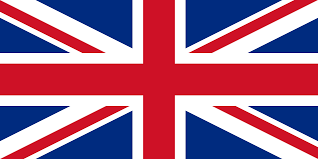England flag Colors Code hex, png svg
History of the Flag of England
The flag of England, known as the St George’s Cross, has a rich history dating back several centuries. Here’s a brief overview:
Origins
- St. George: St. George, a Christian martyr who died in 303 AD, became the patron saint of England during the Middle Ages. His cross, a red cross on a white background, was adopted as a symbol of England.
- Crusades: The use of the St George’s Cross as an emblem of England dates back to the 12th and 13th centuries during the Crusades. English soldiers wore the cross on their tunics to distinguish themselves from other soldiers.
Adoption as National Flag
- 13th Century: The flag was officially adopted by England in 1190, and by the 14th century, it had become a well-recognized symbol of England.
- Union with Scotland: In 1606, after the Union of the Crowns, the flag of England was combined with the flag of Scotland (a white saltire on a blue background) to create the first version of the Union Jack. However, the St George’s Cross remained in use as the flag of England.
Modern Use
- Sporting Events and National Celebrations: Today, the flag is prominently displayed during national celebrations, sporting events, and other occasions to symbolize English pride and heritage.
Colors and Their Meanings
Red Cross
- Symbolism: The red cross represents the martyrdom of St George, symbolizing courage, sacrifice, and the fight against evil.
White Background
- Symbolism: The white background signifies purity, peace, and honesty.
The simplicity and strong contrast of the red and white make the St George’s Cross a powerful and enduring symbol of England’s history and identity.
Guess the Flags Quiz
Sharing is caring 🤗

National Symbols 👇
- 🏁 National Flags
- 🦁 National Animals
- 🐦 National Birds
- 🌻 National Flowers
- 🌴 National Trees
- 🥭 National Fruits
- 🍹 National Drinks
- 👴 National Founders
- ☘️ National Emblems
- 🍲 National Dishes
- 🏛️ National Monuments
- ✍️ National Poets
- 🕌 National Mausoleums
- 🎺 National Instruments
- 🦸 National Heroes
- 📆 National Days

